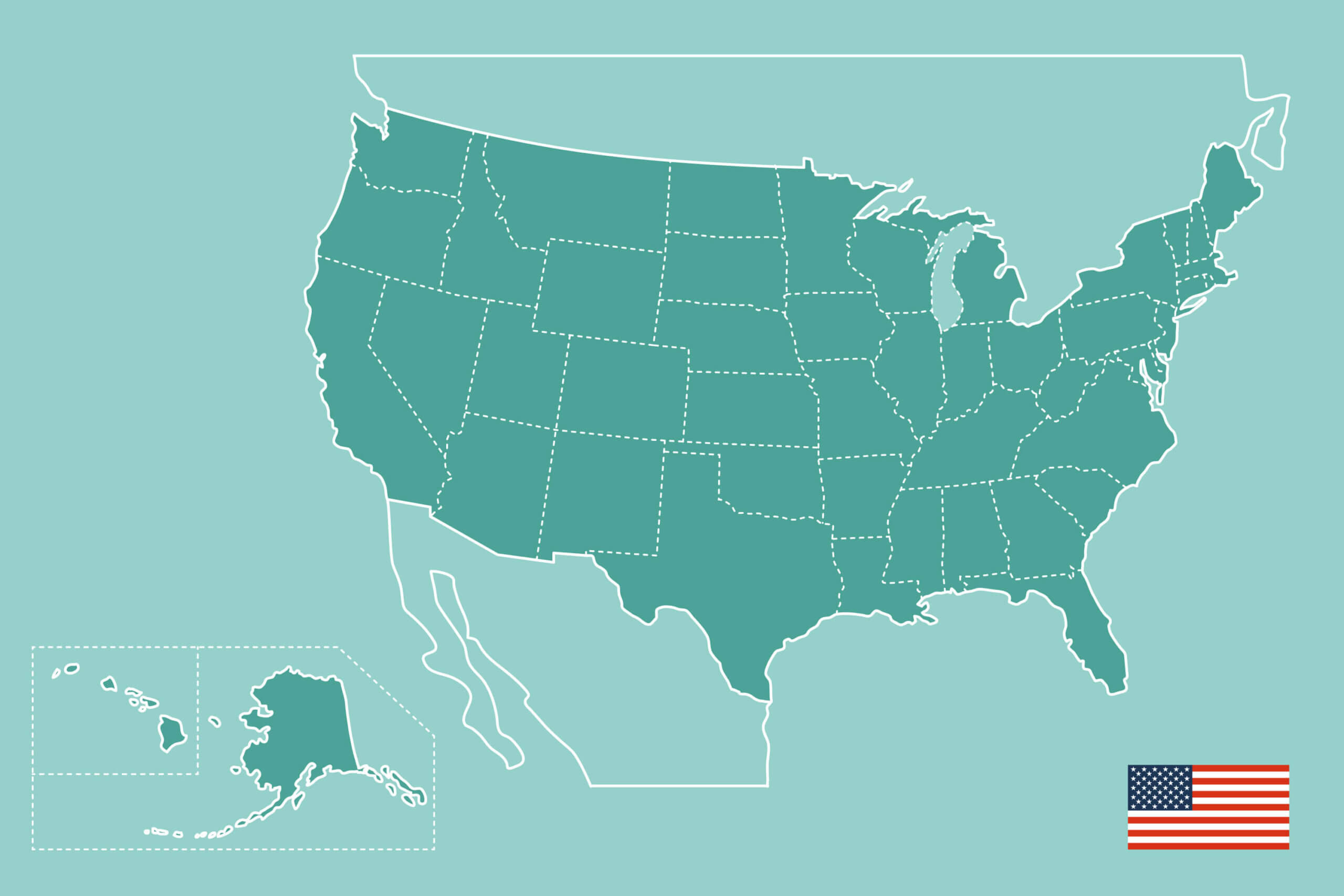Whether you want to purchase a home for your family or invest in a commercial or residential property that will appreciate, you must know the best states for real estate. Each state has different growth rates, property prices, and property taxes. Here is a comprehensive list of the best states for real estate in 2023.
1. Idaho
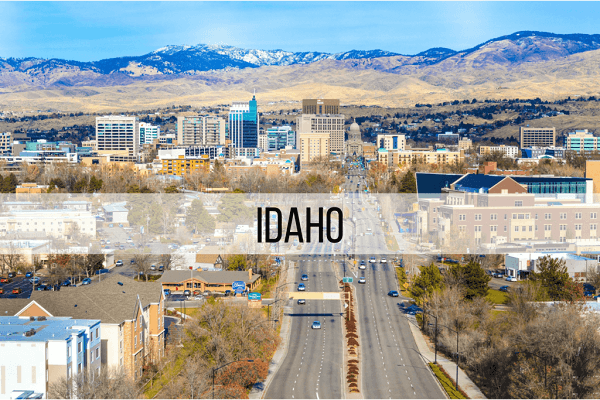
Idaho is nestled into the northwestern part of the United States and is known for its immaculate natural landscapes and protected wilderness. The total real estate appreciation rate for the last two years is 47.64%. Over the past decade, Idaho has seen a real estate appreciation rate of 162.85%.
This wildly high appreciation rate is driven by increased demand for real estate in Idaho. With the cost of living 2% lower than the national average and a low mortgage rate of 2.9%, more people are looking at Idaho as a place to move their family or invest in real estate.
Growth has been incredibly phenomenal in these states:
- Harrison
- Cataldo
- Marsing
- Athol
- Island Park
Here is a comprehensive list of Idaho real estate statistics:
- Median home value: $408,004
- Average market rent: $1,447 per month
- Occupied housing: 88.1%
- Number of homes and apartments: 649,299
- Job growth: 3.25%
- Population growth: 2.9%
2. Arizona

Arizona sits in the southwestern region of the United States and borders California on its west. Arizona’s total real estate appreciation has been 40.29% over the past two years and 27.99% over the past 12 months. As such, Arizona has realized some of the highest real estate appreciation rates in the United States.
Although the cost of living in Arizona is similar to the national average, Arizona features a low mortgage rate. This is why Arizona is one of the most lucrative markets for real estate investors. Furthermore, Arizona experienced the third-fastest recovery in the nation of jobs lost from the pandemic. Forecasters expect over 700,000 new jobs to be added before 2030.
The job growth is an excellent indicator of a growing real estate market because the new workers will need a place to live. The state of Arizona also has exceedingly landlord-friendly jobs. A few cities in Arizona doing better than the state’s average include Chandler, Oro Valley, Gilbert, Tucson, and Flagstaff.
Here is a list of relevant Arizona real estate statistics:
- Median home value: $365,573
- Average market rent: $1,919 per month
- Occupied housing: 86.9%
- Number of homes and apartments: 2,643,430
- Job growth: 3.1%
- Population growth: 1.5%
3. Maine

Maine, which sits on the northeastern corner of the United States, has also seen high real estate growth rates. Over the past two years, Maine’s real estate appreciation rate was 30.98%, and 20.59% over the past 12 months. Although Maine has a lower median income level than the national average, it has a lower cost of living and a low mortgage rate of 2.9%.
Many people from New England and elsewhere around the country choose to retire in Maine. Furthermore, real estate investors see Maine as a great opportunity to buy lower-priced property in a great market with the ability to charge above-average rent rates. As a result, Aroostook and Washington counties have seen the highest growth recently.
Let’s look at Maine’s real estate statistics:
- Median home value: $279,001
- Average market rent: $1,393 per month
- Occupied housing: 76.3%
- Number of homes and apartments: 569,551
- Job growth: 2.0%
- Population growth: 1.1%
4. Utah

Similar to Idaho, Utah is a state known for its wildlife and natural parks. The total real estate appreciation rate over the last two years in Utah was 39.25%. Over the past decade, real estate has appreciated 134.63%.
Utah’s above-average median income leads this high growth. As an above-average earning income state with low mortgage rates, Utah is bound to be an attractive destination for real estate investors and new homeowners. The highest growth Utah cities include Park City, Vineyard, Montezuma Creek, Salt Lake City, and South Salt Lake.
Relevant Utah real estate statistics include:
- Median home value: $479,111
- Average market rent: $1,838 per month
- Occupied housing: 90.4%
- Number of homes and apartments: 1,003,345
- Job growth: 3.6%
- Population growth: 1.3%
5. Montana

Montana is a landlocked state in the Northern part of the United States that shares 14 border crossings with Canada. Montana’s real estate appreciation rate has risen 34.68% over the past two years and 89.63% over the past decade.
This state features a low cost of living and low mortgage rates compared to the national average. Although the median household income of $72,100 is lower than the national average, Montana is exceptionally affordable to live in, which makes it attractive for new homeowners and real estate investors.
Many people are leaving California and moving North to Montana because of the booming real estate market, affordable housing prices, and lower tax rates. There are also few regulations on landlords in Montana and no statewide rent control. The top highest appreciating Montana cities since 2000 are Jordan, Sidney, Fairview, and Scobey.
A few key Montana real estate statistics include
- Median home value: $372,863
- Average market rent: $1,268 per month
- Occupied housing: 84.7%
- Number of homes and apartments: 436,048
- Job growth: 3.4%
- Population growth: 1.7%
6. Washington
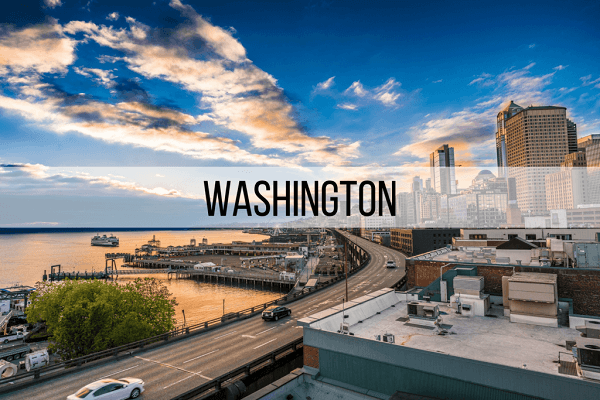
Washington is located in the northwestern corner of the United States and has seen a massive real estate boom over the past two decades. The real estate appreciation rate over the last two years is 21.03%. Additionally, the real estate appreciation rate has been 223.40% over the past two decades.
Washington residents have access to more affordable healthcare and utility rates. However, the overall cost of living in Washington is higher than the national average. Nevertheless, the cost of living is mitigated by a higher median income of $91,600. Along with low mortgage rates, Washington is one of the best states for real estate.
Furthermore, Washington is one of the eight states with no state income tax. Although the pandemic heavily impacted Washington, the employment outlook is looking much better.
- Median home value: $524,077
- Average market rent: $2,009 per month
- Occupied housing: 92.2%
- Number of homes and apartments:2,905,822
- Job growth: 3.5%
- Population growth: 1.27%
7. New Hampshire

Located in the New England region of the United States, New Hampshire is one of the best states for real estate. New Hampshire has seen a 28.82% real estate appreciation rate in the past two years and 51.59% real estate growth in the past five years.
The cost of living in New Hampshire is slightly higher than the national average, but so is the median household income at $98,000 compared to the national average of $79,000. In addition, new Hampshire residents enjoy no state sales, income, or capital gains tax. These features have led to record-high prices for single-family homes as more people work from home.
- Median home value: $382,761
- Average market rent: $1,862 per month
- Occupied housing: 84.4%
- Number of homes and apartments: 539,116
- Job growth: 2.6%
- Population growth: 0.1%
8. Tennessee

Tennessee is another great state for real estate as people are migrating to its best cities. Nashville and the four surrounding cities expect to see a 50% increase in population before 2024. Over the long-term, 500,00 people are expected to move to the region by 2040.
This inbound migration causes a spike in Tenneessee’s housing market. As a result, the real estate appreciation rate over the past two years was 31.38%, and 22.47% over the past 12 months.
Although the median income of Tennessee is lower than the national average, an average house in Tennessee costs about $162,500 less than the national average.
With low mortgage rates as well, Tennessee is one of the best states for real estate.
- Median home value: $245,290
- Average market rent: $1,393 per month
- Occupied housing: 88.1%
- Number of homes and apartments: 2,639,455
- Job growth: 1.8%
- Population growth: 1.21%
9. Rhode Island

Rhode Island sits in the southeastern region of the United States and faces a booming real estate market from out-of-state investors and people looking to buy multi-family dwellings.
The real estate appreciation rate over the past two years was 27.82% in Rhode Island. Furthermore, the real estate market has grown 49.40% over the past five years. Rhode Island has a higher than average median income rate of $88,000 to account for the higher cost of living in the State. Rhode Island’s mortgage rate also sits low at 2.9%
- Median home value: $279,001
- Average market rent: $1,393 per month
- Occupied housing: 76.3%
- Number of homes and apartments: 569,551
- Job growth: 2.0%
- Population growth: 1.1%
10. Oregon

Known for its natural beauty and attractions, Oregon is situated under Washington in the northwestern corner of the United States. The real estate appreciation rate over the past two years was 28.26%, and 116.57% over the past ten years.
Oregon’s evolving tech industry, nicknamed the Silicon Forest, has brought numerous growth benefits to the state. As such, higher-income individuals are migrating to Oregon and purchasing above-average priced homes. As a result, Oregon’s median income is slightly higher than the national average at $81,200.
- Median home value: $473,064
- Average market rent: $1,763 per month
- Occupied housing: 91.8%
- Number of homes and apartments: 569,551
- Job growth: 1.6%
- Population growth: 0.89%
11. Ohio
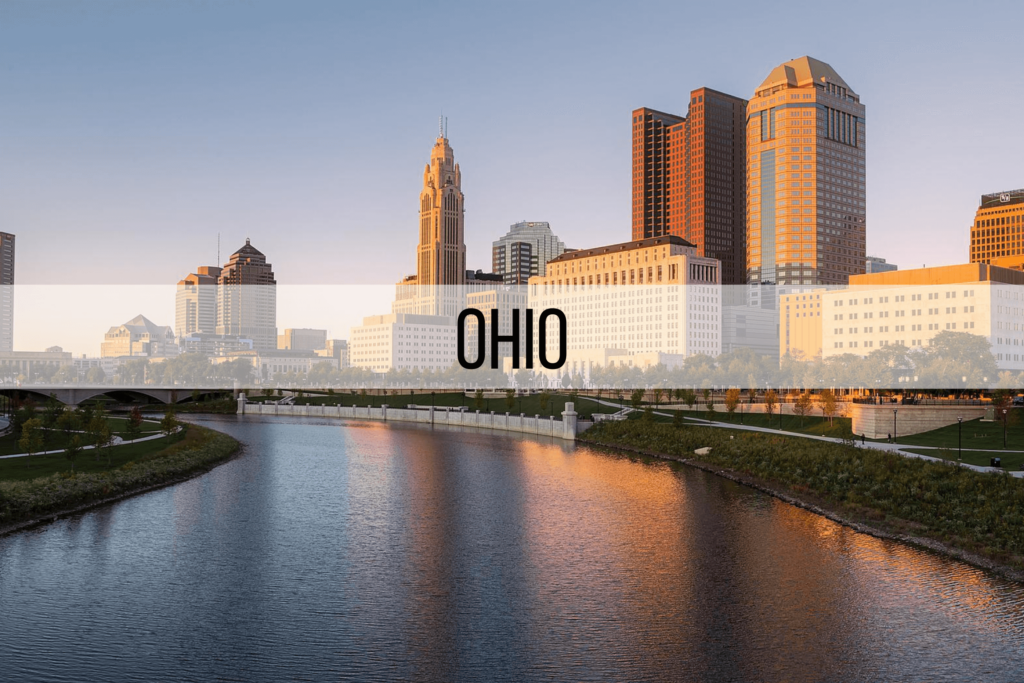
Ohio is one of the best states for real estate because its median home value is significantly lower than the national average. Although the median income value is also lower, Ohio residents get access to a low cost of living and low mortgage rates.
The real estate appreciation rate in Ohio was 23.57% over the past two years and 44.66% over the past five years. These conditions create an ideal environment for those looking to purchase residential or commercial properties in the United States.
- Median home value: $199,717
- Average market rent: $1,132 per month
- Occupied housing: 90.4%
- Number of homes and apartments: 4,717,226
- Job growth: 0.6%
- Population growth: 1.5%
12. Indiana

Located in the heart of the United States, Indiana is another beautiful state for real estate. Over the past two years, Indiana’s real estate appreciation rate was 25.14%, and 47.28% over the last five years.
Furthermore, Indiana’s median home value is lower than the national average. For this reason, you can find an affordable property and see impressive gains as Indiana’s real estate market continues to grow. The best Indiana cities for real estate include Indianapolis, Topeka, Shoals, and Montgomery.
- Median home value: $198,288
- Average market rent: $1,144 per month
- Occupied housing: 80.6%
- Number of homes and apartments: 2,602,770
- Job growth: 2.9%
- Population growth: 0.61%
13. Connecticut
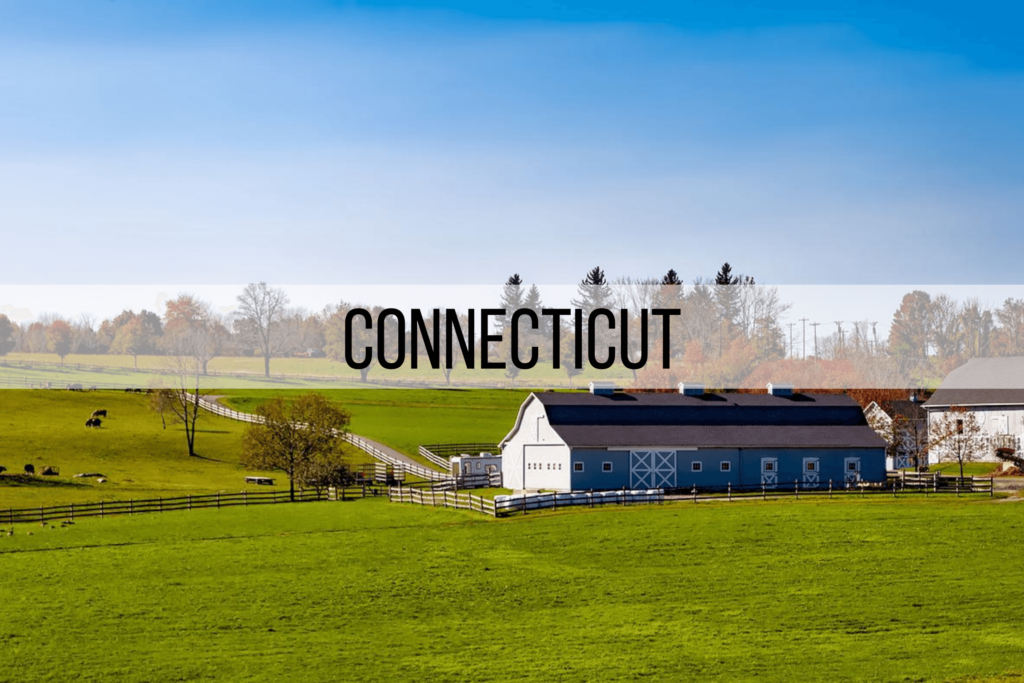
For more wealthier individuals, Connecticut is one of the best states for real estate. The median income in Connecticut is above $100,000, which is much higher than the national average. Since the cost of living in Connecticut is only slightly higher than the United States average, Connecticut is an excellent place to look for real estate.
Connecticut’s real estate appreciation rate was 23.68% over the past two years and 16.10% over the past 12 months.
- Median home value: $349,539
- Average market rent: $1,815 per month
- Occupied housing: 90.1%
- Number of homes and apartments: 1,385,437
- Job growth: 3.3%
- Population growth: 0.5%
14. South Dakota
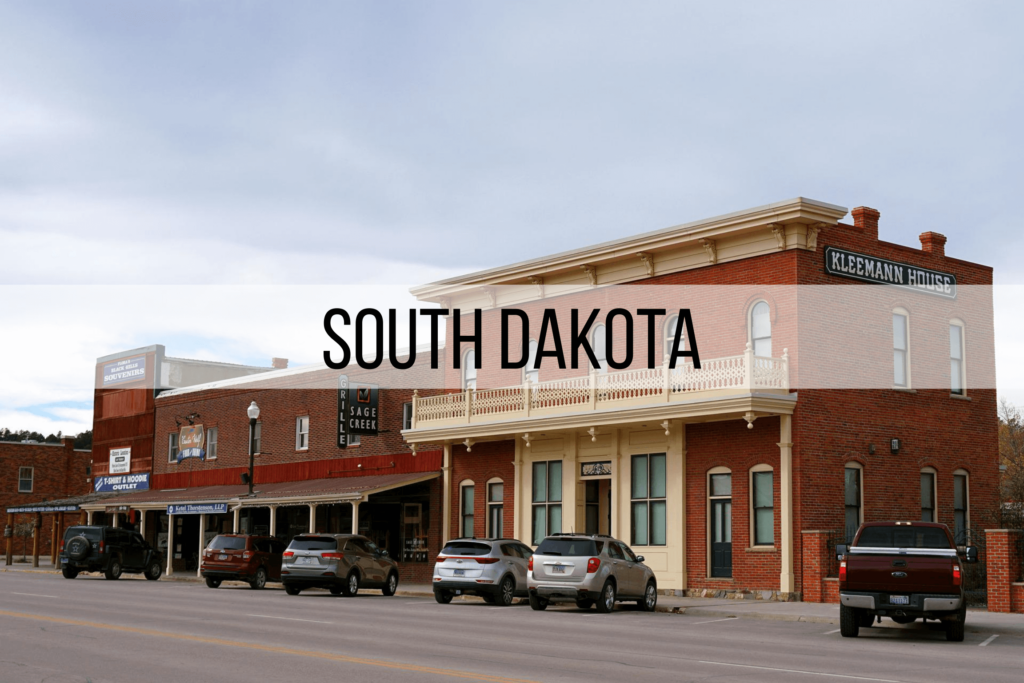
Located in the northern region of the United States, South Dakota is a landlocked state with plenty of real estate opportunities. South Dakota’s real estate appreciation rate was 25.34% over the past two years and 18.55% over the last 12 months.
With a low cost of living, median home value, and mortgage rates, South Dakota’s real estate market is a hidden gem in the United States.
- Median home value: $236,975
- Average market rent: $1,079 per month
- Occupied housing: 87.7%
- Number of homes and apartments: 347,878
- Job growth: 1.02%
- Population growth: 1.17%
15. Florida
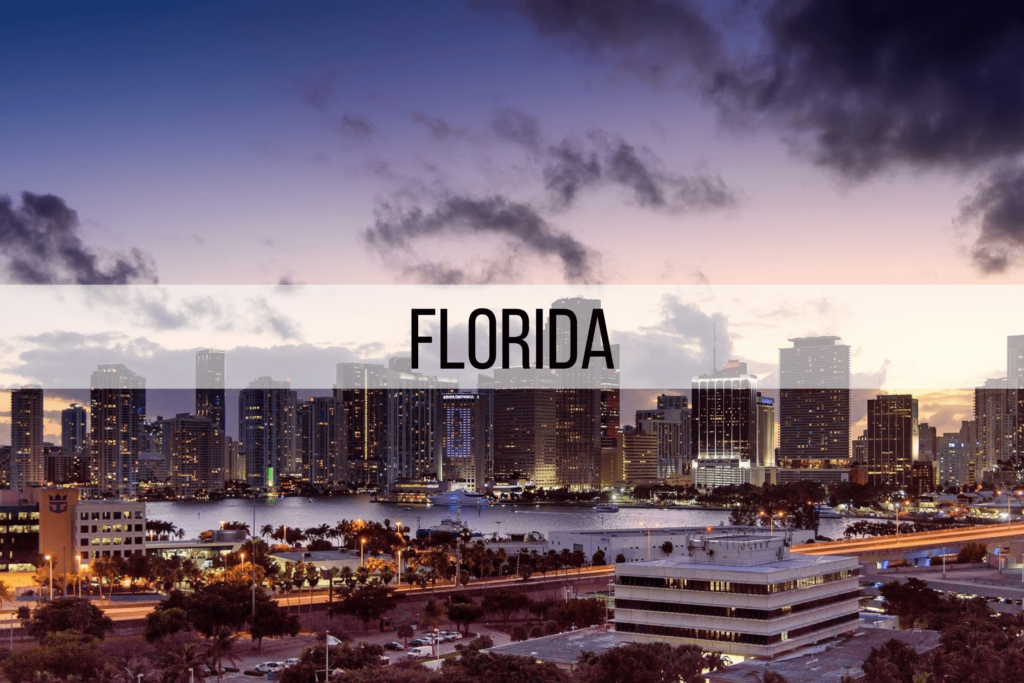
Florida has a population of 22 million and is the eighth most densely populated state in the country. It is also one of the United States’ most popular retirement and vacation destinations. However, buying a property in Florida is still affordable.
The cost of living in Florida is 2% cheaper than the national average but the typical home price is $6,000 more expensive than the national average. Florida has seen sky-high real estate appreciation rates with 33.64% growth in the last two years and 24.47% growth in the past 12 months.
Florida’s relaxed pandemic restrictions caused an influx of new homeowners and real estate investors as the rest of the country was locked down.
- Median home value: $331,461
- Average market rent: $1,972 per month
- Occupied housing: 82.9%
- Number of homes and apartments: 7,931,313
- Job growth: 5.6%
- Population growth: 1.0%
Worst 5 States for Real Estate
As a real estate investor, it’s also essential to understand which states are the worst for real estate. Although the overall housing market in the United States is doing well, and we’re optimistic for the future, there are a few states to avoid. The worst states have high taxes, low employment growth, and low population growth.
1. New York
New York has strict rent-control policies for investors in certain cities and doesn’t have investor-friendly laws. Furthermore, the median home value in New York is $1,276,314. This is exponentially higher than the average median home value in the United States.
The sales tax rate for New York is 8.9% which is higher than the national average of 7.3%. As such, New York residents deal with a higher cost of living than other parts of the country.
- Median home value: $557,428
- Average market rent: $2,255 per month
- Occupied housing: 88.7%
- Number of homes and apartments: 7,417,224
- Job growth: 1.01%
- Population growth: 0.43%
2. New Jersey
New Jersey is also a suboptimal state to purchase real estate in. The most significant factor hurting the New Jersey real estate market is the state’s property taxes of 2.38%. New Jersey also has an above-average median home value and a lower-than-average real estate appreciation rate.
The real estate appreciation rate was 22.80% over the past two years and only 43.73% over the past five years.
- Median home value: $435,725
- Average market rent: $2,289 per month
- Occupied housing: 90.2%
- Number of homes and apartments: 3,272,054
- Job growth: 1.01%
- Population growth: 0.52%
3. California
Although California boasts the largest population in the United States, it’s also one of the worst states for real estate. This is because of California’s high property prices and mortgage rates. With such high home prices in California, renting is often cheaper than outright buying a home.
California also isn’t seeing an increase in new jobs. Unfortunately, this lack of economic growth, paired with outrageously high tax rates and strict landlord regulations, means California isn’t the best state for real estate.
- Median home value: $699,876
- Average market rent: $2,651 per month
- Occupied housing: 92.2%
- Number of homes and apartments: 13,103,114
- Job growth: 1.2%
- Population growth: 0.31%
4. Illinois
Illinois was hit hardest by the 2018 market crash and was one of the states that took the longest to recover. Chicago is the biggest city in Chicago and has one of the highest homicide rates in the entire country. This high level of crime brings risk to investors and ultimately lowers property value.
The real estate appreciation rate over the past two years was only 15.67%, and 11.29% over the last 12 months.
- Median home value: $279,001
- Average market rent: $1,517 per month
- Occupied housing: 90.9%
- Number of homes and apartments: 4,884,061
- Job growth: 4.66%
- Population growth: -0.17%
5. Michigan
Michigan is another one of the worst states for real estate. This state was heavily impacted when motor companies moved out of Detroit. As a result, the entire Michigan economy felt the effects of the move. Michigan doesn’t have the brightest outlook for a diversity of jobs.
- Median home value: $217,059
- Average market rent: $1,262 per month
- Occupied housing: 86.3%
- Number of homes and apartments: 3,980,408
- Job growth: 1.0%
- Population growth: 1.31%
How We Ranked the Best & Worst States for Real Estate
For this list of the best 15 states for real estate, we used real estate appreciation rates as our key metric. We sourced the data about real estate appreciation rates, median home value, occupied housing, and the number of homes and apartments from NeighborhoodScout.
Furthermore, we found the cost of living data from BestPlaces and mortgage rates from USBank. We used real estate appreciation rates as our primary metric because historical appreciation in market values is a good indicator of what’s to come in the future. Furthermore, growth in property prices signals employment gains and population growth.
High population growth and employment gains indicate a healthy economy and a high influx of migrators starting new jobs. As a result, markets that have seen growth in the past are likely to trend higher.
Bottom Line on the Best States for Real Estate
The best states for real estate offer a great quality of life for residential homeowners and an excellent return on investment if you choose to sell in the future. There are many booming real estate markets across the United States, so you should be able to find one that fits your exact needs.
 Sections of this topic
Sections of this topic
